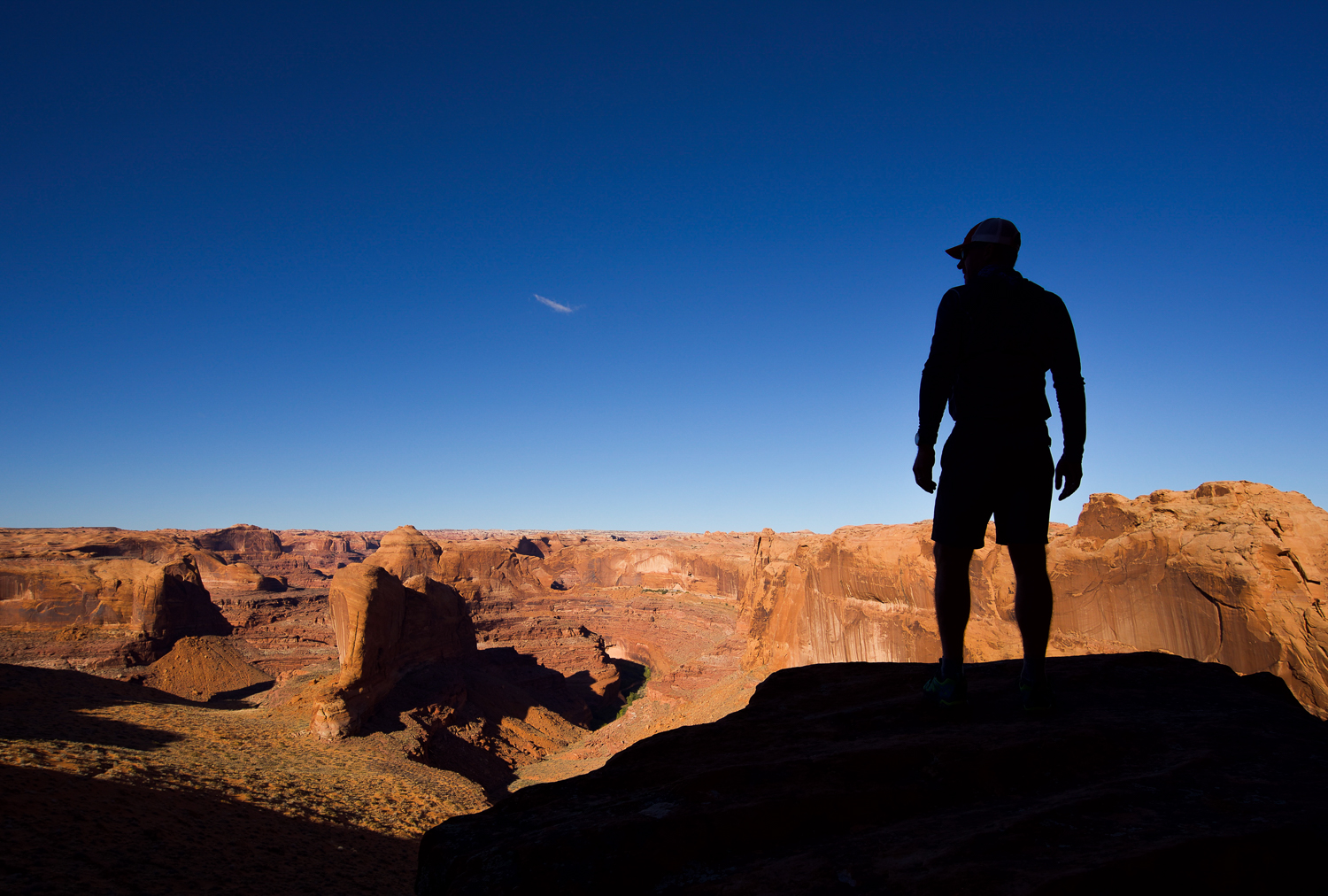“Are those the Bears Ears?” my brother Rob questioned as he pointed at red rock formations to our south. “Sure, I guess those look like large ears.” I knew the Mormon pioneers blazed an overland route through here in the mid-1800s on their way to settle the southeastern corner of Utah. But that was about it. “Trapped” inside my ’89 Wrangler YJ, we drove south on Highway 261, which bisects the Cedar Mesa region in southern Utah. My Wrangler’s six-cylinder carbureted motor sputtered down the tarmac as I looked east and west. Yep, all I saw were trees. Little did I know what history was contained within the land.
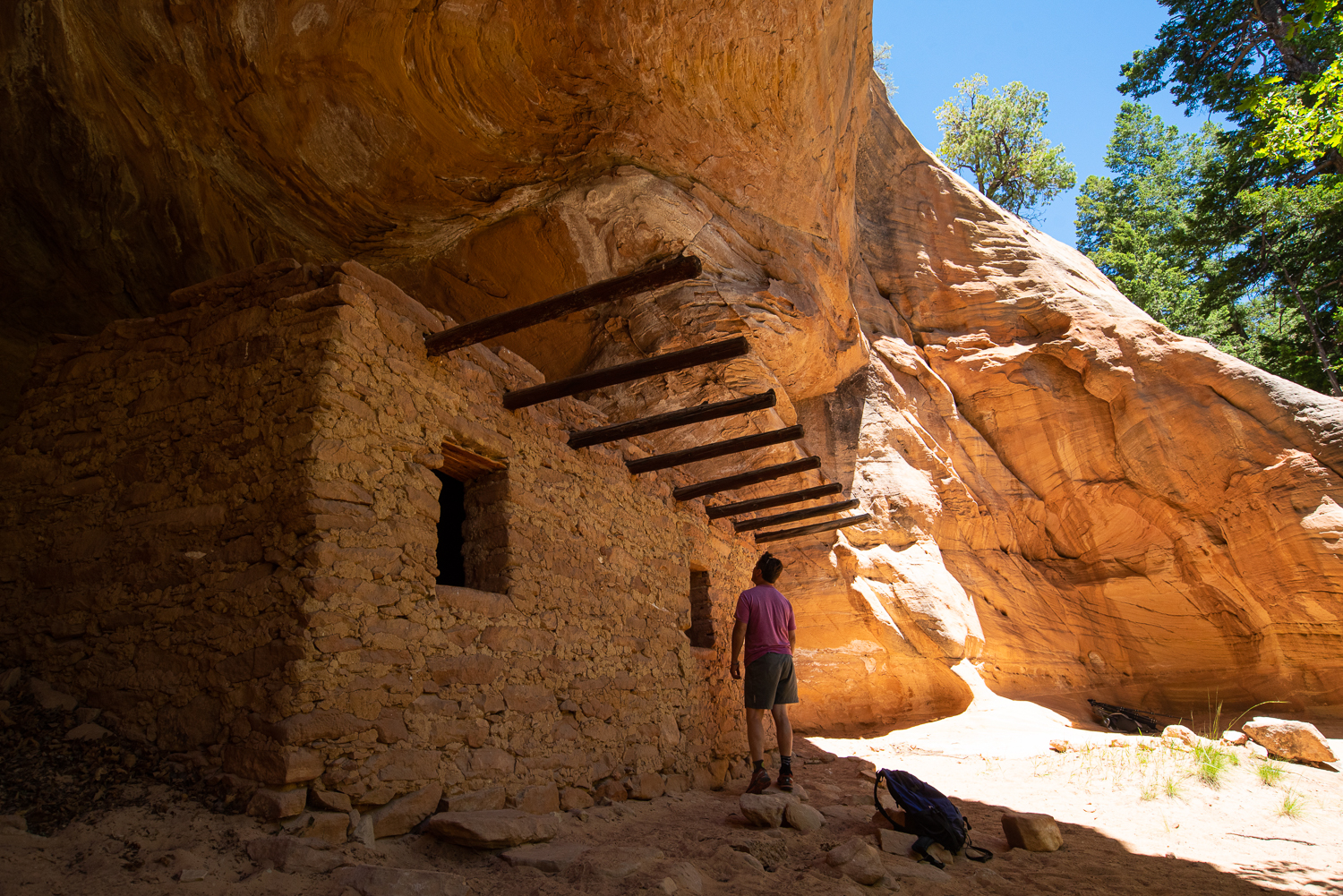
For many of us, overland adventures include miles of paved- and dirt-road travel. We often spend a substantial amount of money to make our journey more comfortable and efficient. Whether it’s a suspension system that allows the vehicle to handle more weight or a 12-volt refrigerator to store our refreshments, we equip our vehicles to conquer whatever path we choose. We travel remote roads to explore our world, to and through places. But to what degree?
I propose that overlanders and backcountry adventurers spend less time in their vehicles and more time experiencing the places along the way. Spoiler alert—you will not see it all, whether on a week’s vacation or a yearlong trip. Focus on what is most important to you: hike to an ancient rock art panel, photograph a stellar sunset, fly fish a mountain stream, or bike a thrilling roller coaster single-track trail.
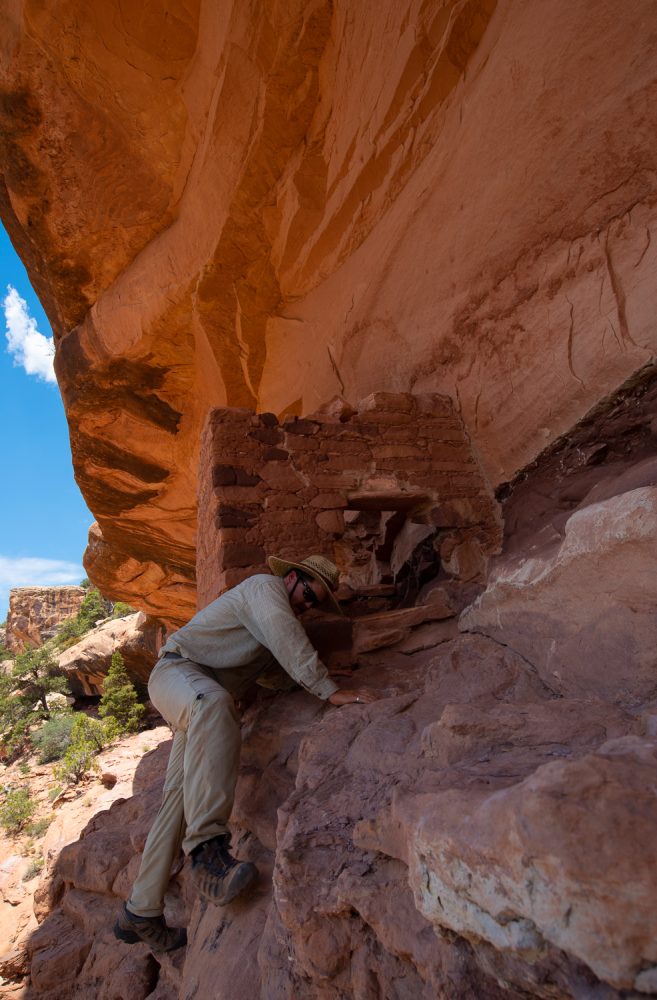
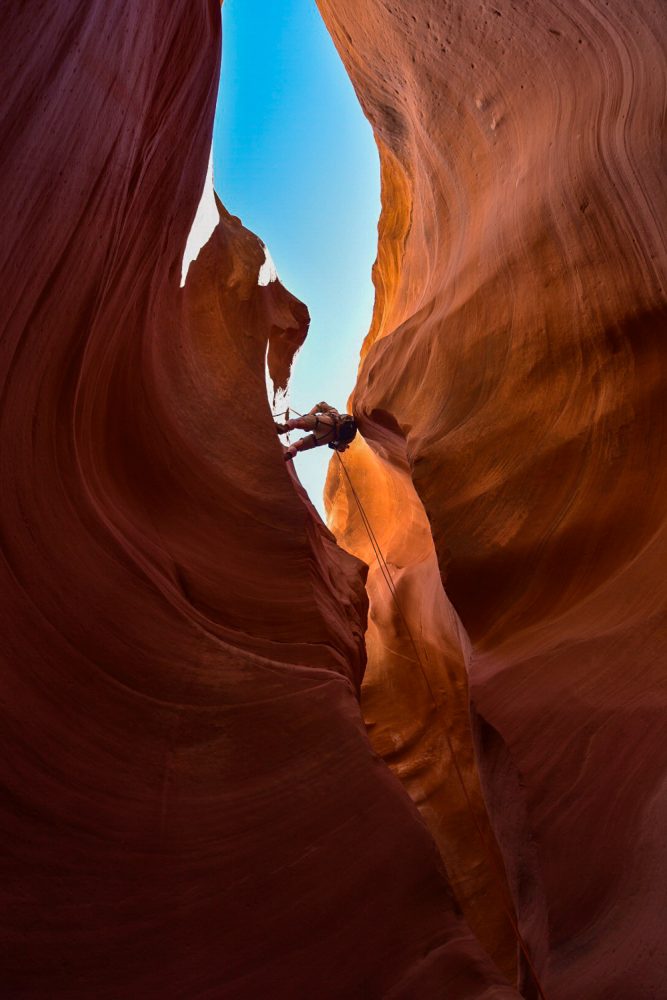
.
My first trip to Cedar Mesa was a two-hour drive through it. A year or so later, a colleague asked me if I had visited and explored the area. Being new to Utah, I replied that I hadn’t. When she showed me on a map, I told her I’d passed by it. “Weren’t the ruins phenomenal?” she asked.
It turns out that Cedar Mesa is home to almost 100,000 Ancestral Puebloans 800 to 1,000 years ago. Their ruins and rock art remain hidden in the area’s many canyons. I decided to interrupt the drive and intimately connect to the land, place, and history. I touched the canyon walls, and hiked through the slot canyons, responding to an invitation to dig deeper.
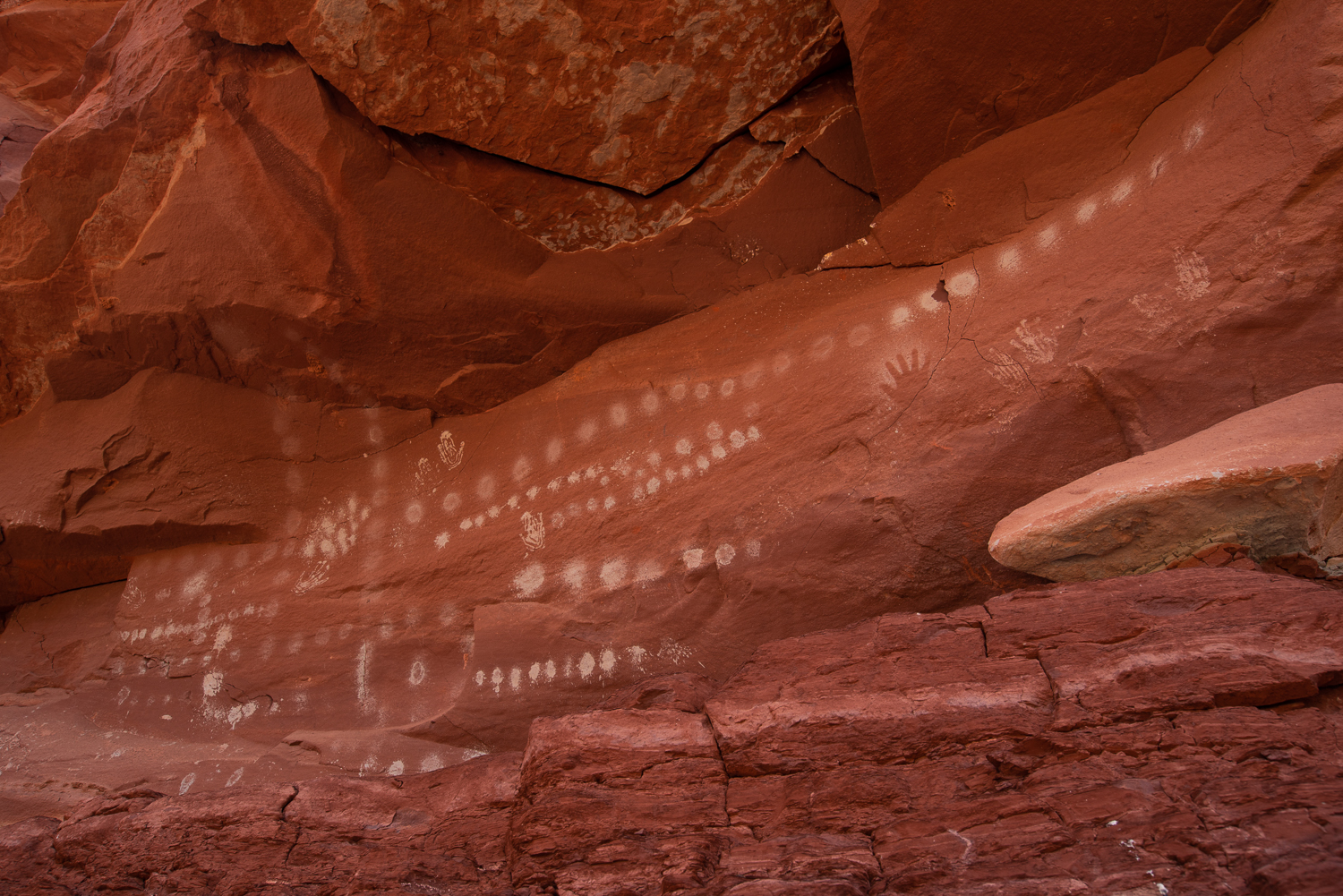

In the years since my first trip, I’ve been fortunate to spend roughly 60 days in the area, wandering and hiking numerous canyons and encountering many sites over 1,000 years old. I have discovered beautiful, well-preserved ruins tucked into alcoves—hidden by those lovely juniper and pinyon pine trees.
Every person should examine their route and determine if out-of-the-vehicle adventures exist. If driving is your thing, go for it; there are miles of roads to drive. Imagine driving through Arches National Park and not hiking to Tower Arch, visiting Yellowstone National Park without fly fishing for Yellowstone cutthroat trout, or missing the American Basin’s wildflower meadows when trekking the San Juan Mountains. There is more beyond the windshield.
An Alternate Scenario
We pulled off Highway 95 in the heart of canyon country. My friends Sam and Shane were excited to meander the northern end of Cedar Mesa in southern Utah. We wanted to “discover” some ruins and canyoneer through a few sandstone slot canyons. Descending into the slot, our hands grasped for holds on the smooth sandstone walls carved by treacherous flash flood waters over thousands of years. We climbed, stemmed, and downclimbed natural obstacles, eventually wading through waist-deep, reddish-brown water. A bridge spanned over us as we followed the twists and turns of the sandstone wonderland. The canyon widened and eased up a bit, so we increased our pace, glancing upward and onto the canyon rim. Our eyes scanned the facade, eager to spot ruins and signs of the ancient ones who had resided in this area until roughly 1300.
As the canyon constricted and dropped again, Sam located existing rappel anchors. Shane rigged the rope into the anchors and threw it down. We took turns rappelling. While descending, my brake hand slowed my momentum as I refocused on the landing. With my other hand, I felt the rough layers of the sandstone walls, multicolored from the settling of minerals over time. We continued downcanyon and discovered it was filled with water. Cautiously, we entered the pool and swam through its chilling temperature until we reached terra firma. We wrung out our shirts and basked in the warm desert sun’s rays.
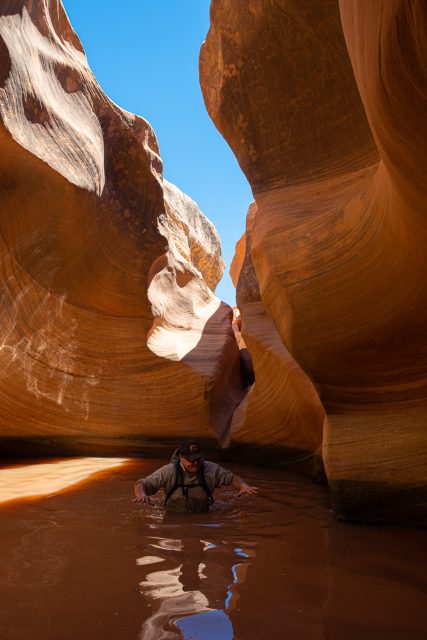
Shane pointed to a western alcove and a southwest-facing ruin comprised of 20 to 30 rooms. Ingenious, I thought. The ancient ones knew and understood the value of the sun’s warmth—especially during the cold winter months. Staring at it, we stood speechless in awe and wonder. The ruins were inaccessible, which was okay by us. This site had sat undisturbed since its juniper log ladder fell and washed away long ago. Back at our vehicles, we sorted our gear and felt satisfied that we had truly experienced Cedar Mesa and some of its wonders—if only for a few hours.
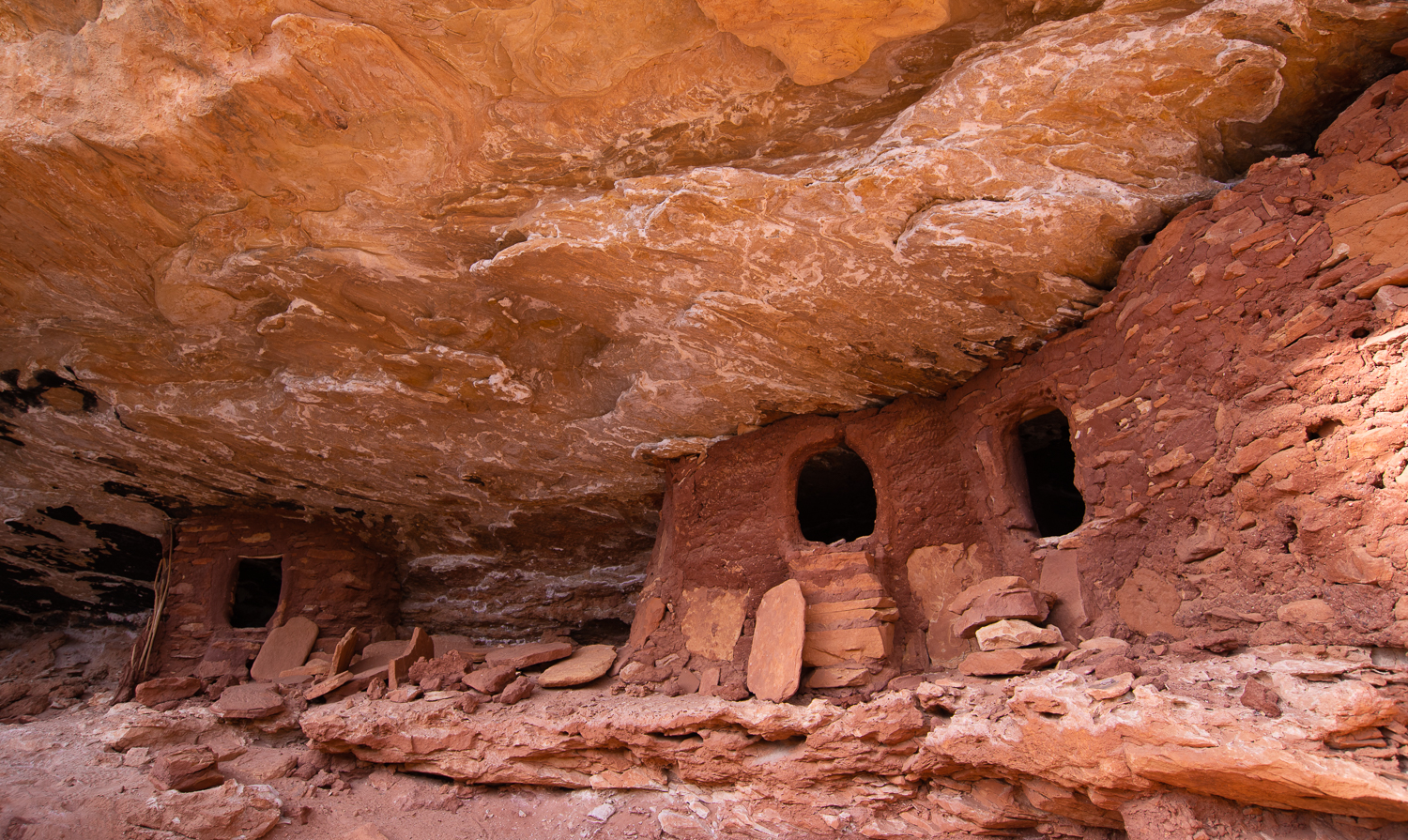

Suggestions
- Look at your route carefully, scanning for trailheads and landmarks.
- Rely on guidebooks.
- Talk to locals as they know the goods and will generally share knowledge if you ask. Whether it’s about a scrumptious restaurant, a can’t-miss landmark, or a hike, most people are friendly and willing to help.
- Google what you would like to do in the area. Search “best mountain bike ride in Moab,” “best hikes in Sedona,” or “best wildflower fields in Colorado.”
- Use website forums like expeditionportal.com to peruse the wealth of knowledge readily available.

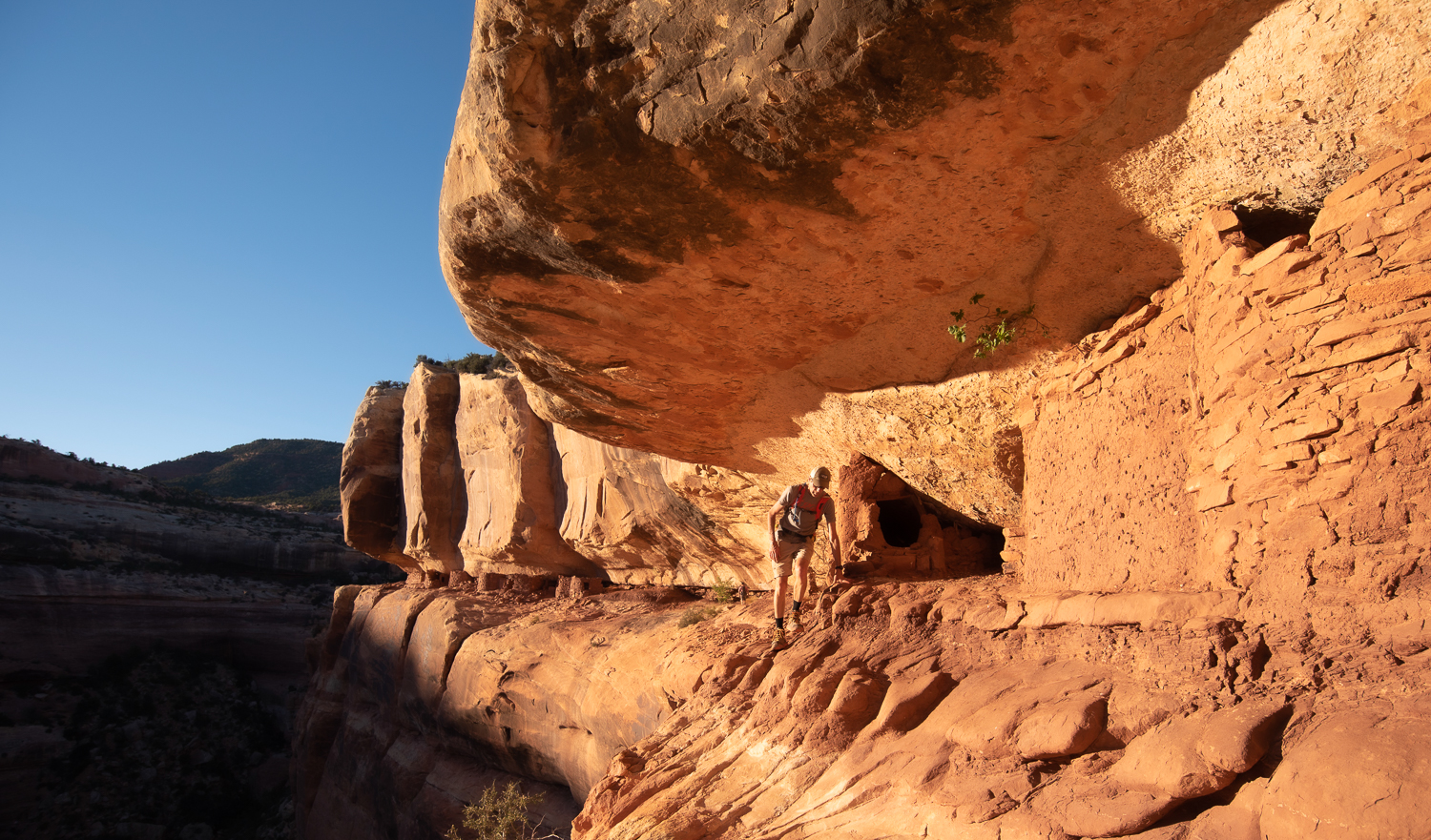
Our No Compromise Clause: We carefully screen all contributors to ensure they are independent and impartial. We never have and never will accept advertorial, and we do not allow advertising to influence our product or destination reviews.


